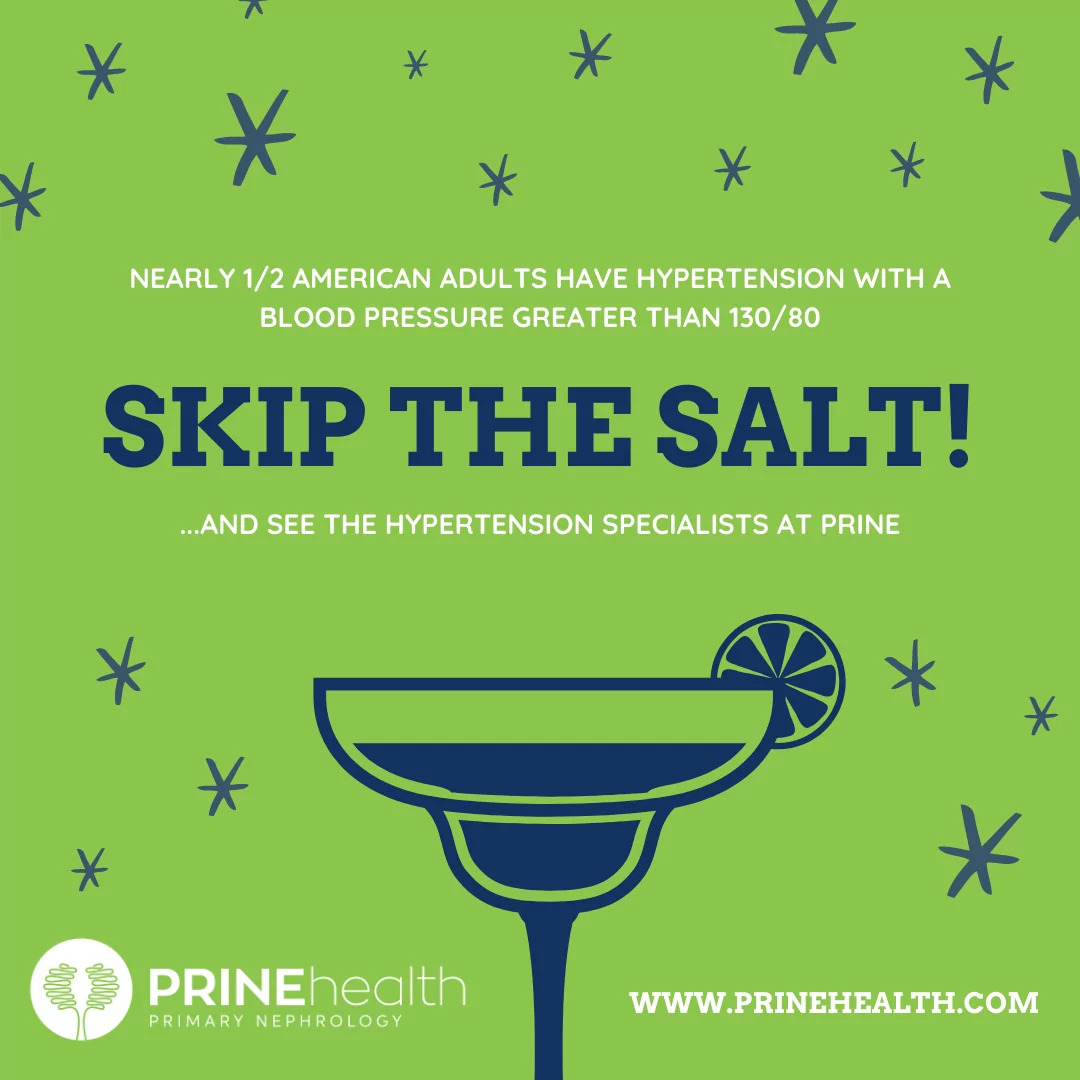Skip The Salt
Facts About Salt And Hypertension In The United States
High blood pressure (also known as hypertension) is associated with three leading causes of death, cardiovascular disease, stroke, and kidney disease. Hypertension is extremely prevalent around the world. About half of adults (45%) with uncontrolled hypertension have a blood pressure of 140/90 mm Hg or higher. This includes 37 million U.S. adults. In 2017, the American College of Cardiology and the American Heart Association published new guidelines for hypertension management and defined high hypertension as blood pressure at or above 130/80 mm Hg. Stage 2 hypertension is defined as blood pressure at or above 140/90 mm Hg. One notorious contributor to hypertension is excessive dietary salt intake.
| Blood Pressure Category | Systolic Blood Pressure | Diastolic Blood Pressure | |
|---|---|---|---|
| Normal | <120 mm Hg | and | <80 mm Hg |
| Elevated | 120-129 mm Hg | and | <80 mm Hg |
| Hypertension | |||
| Stage 1 | 130-139 mm Hg | or | 80-89 mm Hg |
| Stage 2 | ≥140 mm Hg | or | ≥90 mm Hg |
Salt and Hypertension
Salt is perhaps the most popular flavoring added to food. Unfortunately, there is a downside. Too much salt can lead to fluid retention and worsen hypertension. How much is too much? Well, we need salt. We need about 500 mg per day. Americans consume much, much more than that. We take in on average closer to 3,500 mg, more than 7 times what is necessary. The Dietary Guidelines for Americans by the FDA advise we stick to a diet of fewer than 2,300 mg per day (about one teaspoon).
Salt is ubiquitous and added to all sorts of foods you consume on a daily basis. Moreover, the is often a salt shaker around to add even more. If you already have hypertension you are at risk for extra salt worsening your hypertension. So, when you can help it, skip the salt! Learn more about High blood pressure.



